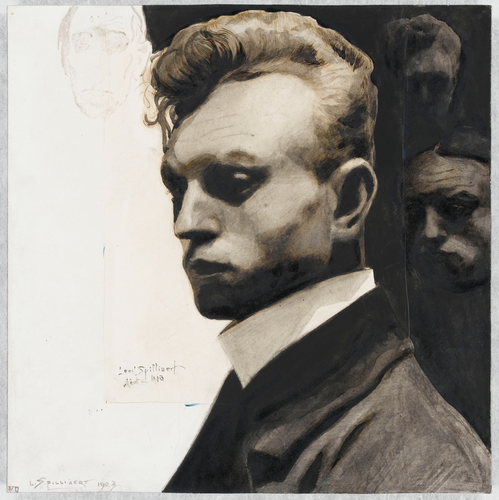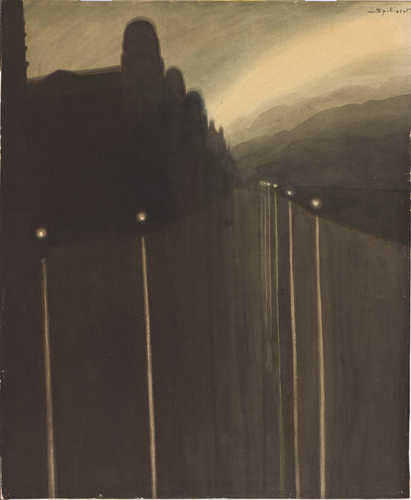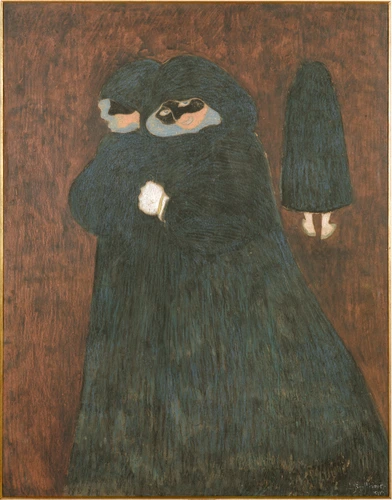Clair de lune et lumières
This urban landscape is from a series that Spilliaert produced around 1909-1910 in Ostend (Belgium), a seaside resort on the North Sea where the artist spent most of his life. Here, he bases his composition on the colonnade and arcades of the façade of the Kursaal ballroom. Standing alone on the dyke, the huge silhouette of the Kursaal, designed by the French architect Alban Chambon (1847-1928), towers above the shoreline. The building was destroyed during the Second World War, and subsequently replaced with a modern construction.
In his pastel, Spilliaert captures the eerie transformation of the architecture at night, and the strangeness emanating from the artificial lighting.
With its cosmic, metaphysical dimension, this drawing reveals the influence of Van Gogh (we are reminded particularly of Starry Night , 1888-1889, Musée d'Orsay) whose work was widely distributed in Symbolist circles. In his landscapes, as in his interiors, Spilliaert uses perspective and framing to endow the empty space with a dramatic presence that also expresses the solitude, anguish and feeling of morbidity inherent in Symbolist culture in the late 19th and early 20 centuries.
The artist's graphic technique, with its great economy of methods and colours – the intense white of the lights is achieved by leaving areas of white paper visible, faintly outlined in pale blue and red – reveals the level of mastery attained in just a few years after his first works at the beginning of the 20th century.



